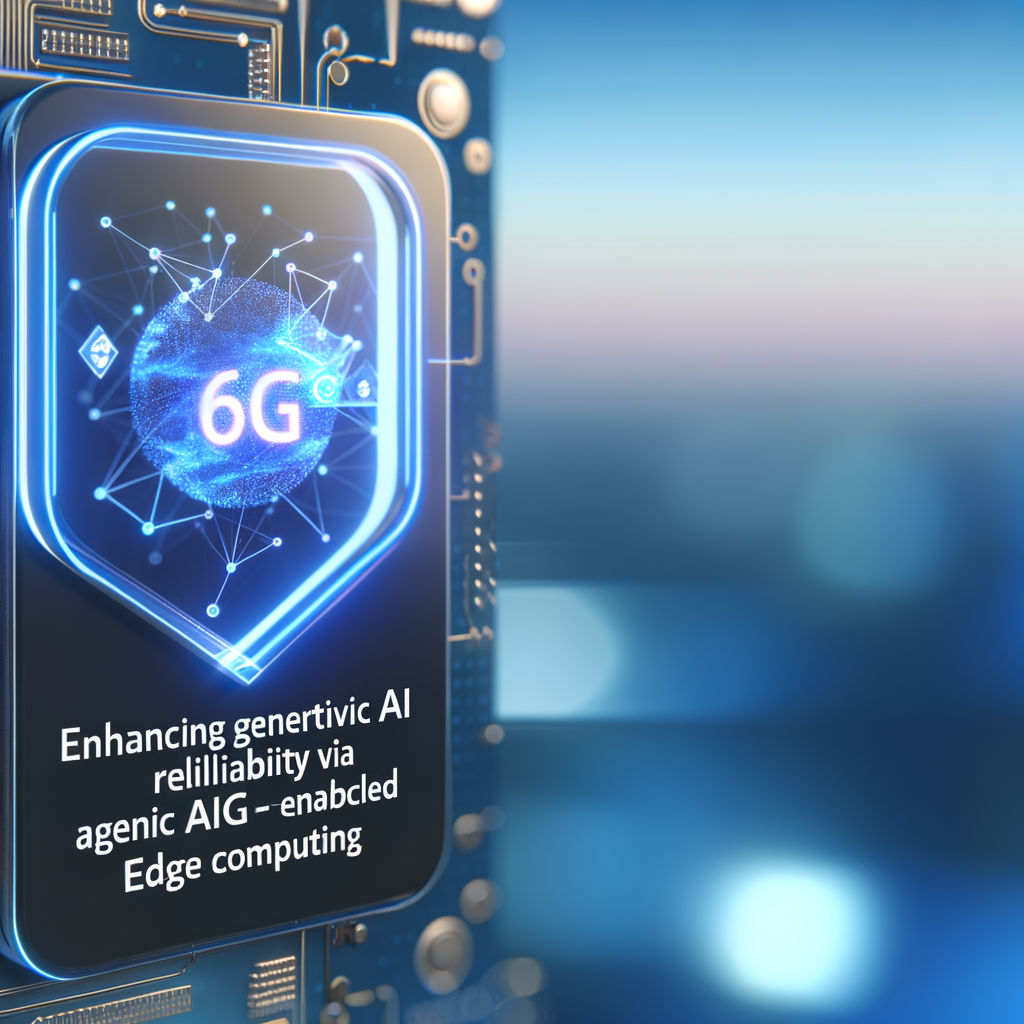Boosting Generative AI Reliability with 6G Edge Computing

In the rapidly evolving landscape of technology, the intersection of generative AI, agentic AI, and 6G-enabled edge computing is not just a speculative fantasy; it’s a burgeoning reality that holds the potential to redefine industries, economies, and even daily life. As we stand in 2025, an era marked by unprecedented digital advancement, understanding how these technologies can synergize to enhance the reliability of generative AI systems is critical. Imagine a world where AI capabilities are no longer hampered by latency, connectivity issues, or computational constraints. Instead, they operate with unprecedented efficiency and reliability, thanks to the transformative power of 6G-enabled edge computing.
The Historical Context: From 5G to 6G
To appreciate the leap to 6G, it’s essential to understand the groundwork laid by its predecessor. The rollout of 5G networks in the early 2020s revolutionized data transfer speeds and created the infrastructure necessary for innovations like IoT and smart cities. However, as demands for data processing and transmission continued to skyrocket, it became apparent that even 5G had its limitations, particularly in supporting the expansive data needs of AI-driven technologies.
6G, expected to be widely available by 2030, promises speeds up to 100 times faster than 5G, with latency reductions pushing the boundaries of real-time data processing. This next generation of connectivity is not just about speed; it’s about creating smarter, more efficient networks capable of supporting complex, data-intensive applications such as autonomous vehicles, immersive VR environments, and, crucially, AI systems deployed at the edge.
The Rise of Agentic AI
Agentic AI, a term gaining traction in 2025, refers to AI systems capable of independent decision-making and learning from interactions with their environment. Unlike traditional AI models, which often require constant human oversight and predefined parameters, agentic AI systems can autonomously adapt to new data and situations. This capability is crucial for enhancing the reliability and efficiency of generative AI, which is often used in complex, dynamic environments.
By integrating agentic AI with edge computing, organizations can deploy AI models that learn and adapt in real time, reducing dependence on centralized data centers. This not only cuts down on latency but also enhances the system's ability to operate efficiently in diverse conditions, from remote industrial sites to urban centers plagued by network congestion.
6G-Enabled Edge Computing: The Game Changer
Edge computing, which brings computation and data storage closer to the location where it is needed, has already started to transform how AI systems are deployed. By minimizing the distance data must travel, edge computing reduces latency and enhances data privacy and security—critical factors for AI reliability.
With the advent of 6G, edge computing capabilities are set to explode. 6G networks provide the necessary bandwidth and connectivity to support real-time data processing at the edge. This is particularly beneficial for generative AI applications that require immediate feedback and low-latency responses to operate effectively, such as in healthcare diagnostics, autonomous vehicles, and real-time language translation.
Real-World Applications and Impacts
The integration of 6G-enabled edge computing and agentic AI into generative AI systems is already making waves across various sectors. In healthcare, for instance, AI models are being deployed at the edge to provide faster, more accurate diagnoses in remote areas where access to traditional medical facilities might be limited. In manufacturing, AI systems are optimizing production lines by continuously learning and adapting to minimize downtime and material waste.
Moreover, sectors like finance and retail are leveraging agentic AI to enhance customer experiences by providing real-time recommendations and personalized services. The ability of these AI systems to learn from interactions and adapt instantly to changing customer preferences is transforming how businesses engage with consumers.
Future Implications and Potential Outcomes
Looking ahead, the marriage of generative AI with agentic AI and 6G-enabled edge computing opens up a universe of possibilities. As these technologies mature, we can expect increased automation across industries, enhanced real-time decision-making capabilities, and a significant reduction in the digital divide as even the most remote locations become connected.
However, with these advancements come challenges that must be addressed. Ensuring data security and privacy in a hyper-connected world is paramount, as is addressing the ethical implications of autonomous AI systems that can learn and adapt without human oversight.
A Crossroads of Technology
In conclusion, as we navigate the landscape of 2025, the convergence of generative AI, agentic AI, and 6G-enabled edge computing stands at the forefront of technological advancement. It represents a crossroads of innovation, one that not only promises to enhance AI reliability but also to transform our interaction with technology at large. For businesses, governments, and individuals, staying informed and adaptable in this dynamic environment is not just advantageous; it’s essential.